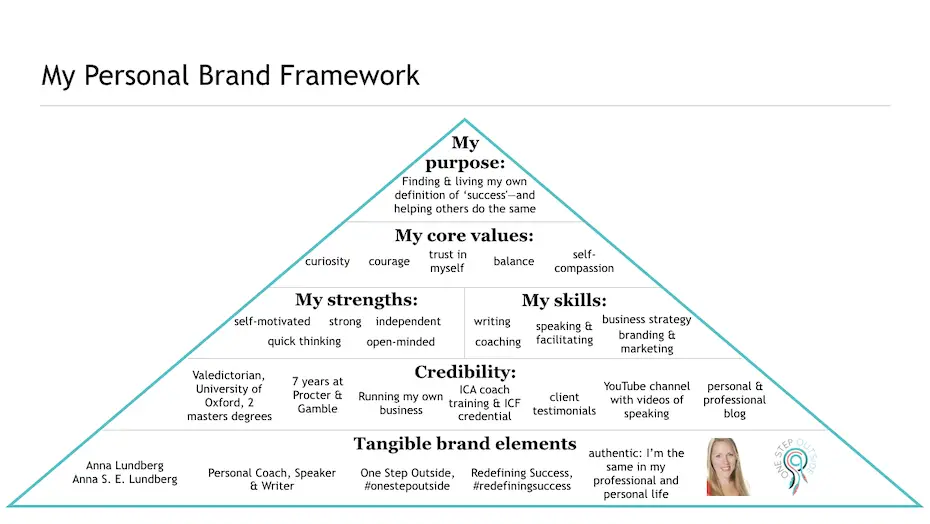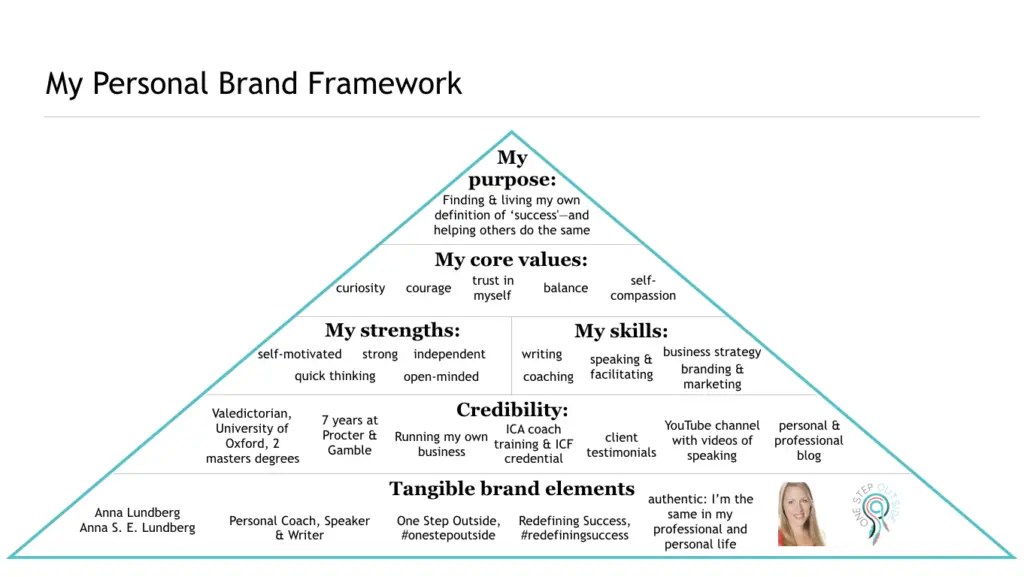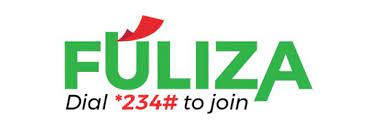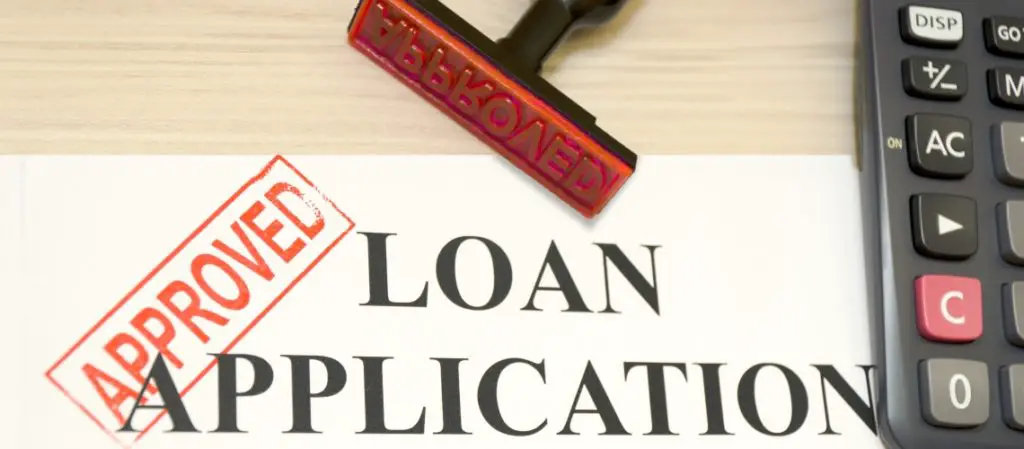Are you a blogger in Kenya looking to build a strong personal brand? In this article, we will explore the most effective strategies to help you establish your presence and stand out in the crowded blogging space. From creating compelling content to engaging with your audience and utilizing social media platforms, we will provide valuable insights tailored specifically for Kenyan bloggers. Whether you are just starting out or looking to take your blogging career to the next level, these tips will help you build a successful personal brand and make your mark in the Kenyan blogging industry.

This image is property of tdsmarketers.com.
1. Define Your Blogging Niche
Identify your passion and expertise
The first step in building a successful personal brand as a blogger in Kenya is to identify your passion and expertise. Think about the topics that you are truly passionate about and have extensive knowledge in. This will not only make it easier for you to create content, but it will also showcase your enthusiasm and authenticity to your audience. Whether it’s travel, fashion, food, or technology, choose a niche that aligns with your interests and expertise.
Research the market and audience demand
Once you have identified your passion and expertise, it’s important to research the market and audience demand for your chosen niche. Take the time to analyze what topics are popular within your niche, what content is already available, and what your target audience is looking for. This research will help you understand what type of content will resonate with your audience and ensure that you are creating valuable and relevant content.
Narrow down your focus to a specific niche
While it’s important to choose a niche that aligns with your passion and expertise, it’s equally important to narrow down your focus to a specific niche. By specializing in a particular sub-topic within your broader niche, you can establish yourself as an expert and build a loyal following of readers who are interested in that specific topic. For example, if your passion is travel, you may decide to focus specifically on budget travel in Kenya or adventure travel in East Africa.
Develop a unique selling proposition
In order to stand out from the sea of other bloggers in Kenya, it’s crucial to develop a unique selling proposition (USP) for your personal brand. Your USP is what sets you apart from other bloggers in your niche and highlights what makes your content unique and valuable. This could be your writing style, your expertise in a specific area, or your ability to provide practical tips and advice. By clearly defining your USP, you can attract a loyal audience who resonates with your unique perspective.
2. Create a Compelling Blog Design
Choose a professional and user-friendly platform
When it comes to building a personal brand as a blogger in Kenya, choosing the right blogging platform is crucial. It’s important to select a platform that is not only professional but also user-friendly. WordPress and Blogger are popular choices among bloggers due to their ease of use and customizable features. Consider factors such as design templates, customization options, and the ability to integrate plugins and widgets when choosing the platform that best suits your needs.
Select an eye-catching and responsive theme
Your blog design plays a significant role in attracting and engaging your audience. Selecting an eye-catching and responsive theme is essential to create a visually appealing and user-friendly blog. Choose a theme that reflects your brand identity and is optimized for mobile devices. Ensure that the theme you choose is responsive, meaning it adapts to different screen sizes and devices, to provide a seamless browsing experience for your readers.
Create a cohesive brand identity with consistent visuals
To build a strong personal brand as a blogger in Kenya, it’s important to create a cohesive brand identity with consistent visuals. This includes selecting a color palette, font styles, and graphics that align with your brand persona. Your blog’s visuals should not only be visually appealing but also consistent across your blog and social media platforms. This creates a recognizable and memorable brand image that helps establish your credibility and professionalism.
Optimize your blog for speed and mobile devices
In today’s digital age, it’s crucial to optimize your blog for speed and mobile devices. Slow-loading blogs can lead to high bounce rates and frustrated readers. Ensure that your blog is optimized for speed by minimizing image sizes, enabling browser caching, and optimizing your code. Additionally, with the increasing use of mobile devices, it’s essential to have a mobile-responsive design that provides a seamless browsing experience on smartphones and tablets.

This image is property of www.brandloom.com.
3. Develop a Consistent Blogging Schedule
Establish a realistic posting frequency
Consistency is key when it comes to building a personal brand as a blogger in Kenya. Establishing a realistic posting frequency is crucial to keep your audience engaged and coming back for more. Determine how often you can produce high-quality content without sacrificing its quality. It’s better to start with a lower posting frequency that you can realistically maintain rather than committing to a higher frequency that you struggle to meet consistently.
Plan your content in advance
To ensure consistency, it’s important to plan your content in advance. This allows you to organize your ideas, conduct thorough research, and create an editorial calendar that outlines when each piece of content will be published. Planning your content in advance also helps you maintain a balanced mix of topics and ensure that your blog remains relevant and interesting to your audience.
Maintain a consistent voice and style
In addition to consistent posting, it’s essential to maintain a consistent voice and style throughout your blog. This includes the tone of your writing, the language you use, and the overall style of your content. Consistency in voice and style helps build trust with your audience and reinforces your personal brand. Whether your style is casual and conversational or more formal and informative, staying true to your established voice will help you connect with your readers.
Engage with your readers through comments and social media
Engaging with your readers is an important aspect of building a personal brand as a blogger in Kenya. Actively respond to comments on your blog posts and engage with your audience on social media platforms. Answering questions, thanking readers for their feedback, and participating in discussions helps foster a sense of community and builds stronger relationships with your audience. By showing genuine interest in your readers, you can create a loyal following that keeps coming back for your content.
4. Produce High-Quality and Relevant Content
Conduct thorough research before writing
Producing high-quality and relevant content requires thorough research. Before writing a blog post, take the time to gather information from credible sources, gather data and statistics, and familiarize yourself with the latest trends and developments in your niche. This will ensure that your content is accurate, informative, and valuable to your readers. Invest time in researching your topics to provide fresh and valuable insights to your audience.
Write informative and engaging blog posts
Once you have conducted the necessary research, it’s time to write informative and engaging blog posts. Structure your content in a logical and organized manner, using subheadings, bullet points, and images to break up the text and make it more visually appealing. Write in a conversational tone that resonates with your target audience and keep your content concise, yet informative. Use storytelling techniques and personal anecdotes to make your content more relatable and engaging.
Use visual content (images, videos) to enhance your posts
Incorporating visual content into your blog posts is a great way to enhance your content and make it more engaging for your audience. Use relevant and high-quality images, infographics, and videos to complement your written content. Visual content not only helps break up the text but also makes your blog posts more visually appealing and shareable on social media platforms. Be sure to optimize your images for web to ensure faster loading times.
Optimize your content for search engines (SEO)
To increase your blog’s visibility and attract organic traffic, it’s important to optimize your content for search engines. This process is known as search engine optimization (SEO) and involves incorporating relevant keywords, meta tags, and descriptive URLs into your blog posts. Conduct keyword research to identify the most relevant keywords for your niche and strategically place them throughout your content. Additionally, optimize your blog posts’ titles, headings, and meta descriptions to increase their chances of ranking higher in search engine results pages.

This image is property of 99designs-blog.imgix.net.
5. Leverage Social Media Platforms
Identify the most suitable social media platforms for your target audience
Social media platforms provide an excellent opportunity to expand your reach and engage with your audience. Identify the most suitable social media platforms for your target audience and focus your efforts on those platforms. In Kenya, popular social media platforms include Facebook, Instagram, Twitter, and LinkedIn. Each platform has its own unique features and audience demographics, so it’s important to choose the platforms that align with your target audience.
Create and optimize your profiles
Once you have identified the social media platforms you want to leverage, it’s time to create and optimize your profiles. Use consistent branding across all your social media profiles to maintain a cohesive and recognizable brand identity. Provide a clear and concise description of your blog and include a link to your blog in your bio or profile. Additionally, optimize your profiles by using relevant keywords and hashtags to increase your discoverability on these platforms.
Regularly share your blog posts and other relevant content
Social media platforms are an excellent way to promote your blog posts and share other relevant content with your audience. Regularly share your blog posts on your social media profiles, accompanied by attention-grabbing captions and enticing visuals. Additionally, curate and share other valuable content within your niche that your audience may find interesting. This demonstrates your expertise and provides additional value to your followers.
Engage with your followers and join relevant communities
Engagement is key when it comes to leveraging social media platforms to build your personal brand as a blogger in Kenya. Actively engage with your followers by responding to comments, liking and sharing their content, and initiating conversations. This helps build a sense of community and loyalty among your audience. Furthermore, join relevant communities and groups within your niche, where you can actively contribute and establish yourself as an expert in your field.
6. Network with Other Bloggers and Influencers
Attend blogging events and conferences
Networking with other bloggers and influencers is a valuable opportunity to learn, collaborate, and expand your reach. Attend blogging events and conferences where you can connect with like-minded individuals and build relationships within the blogging community. These events often provide opportunities for learning, sharing experiences, and collaborating on projects that can help elevate your personal brand.
Join blogging networks and communities
In addition to attending live events, joining blogging networks and communities can provide ongoing networking opportunities. These platforms connect bloggers with similar niches and interests, allowing you to collaborate, share knowledge, and support one another. By actively participating in these networks and communities, you can build relationships with fellow bloggers, exchange guest blogging opportunities, and gain exposure to new audiences.
Collaborate with fellow bloggers and influencers
Collaborating with fellow bloggers and influencers is a powerful way to grow your personal brand and reach a wider audience. Seek out bloggers and influencers who complement your niche and have an engaged following. Collaborate on joint projects, such as guest blog posts, podcast episodes, or social media campaigns. By leveraging each other’s audiences and expertise, you can increase your visibility and establish yourself as an authority in your niche.
Offer guest posting opportunities and accept guest posts
Guest posting is another effective way to network with other bloggers and influencers while also diversifying your content. Offer guest posting opportunities on your blog to other bloggers who align with your niche. This not only provides fresh perspectives and expertise to your audience but also exposes your blog to a new audience through the guest blogger’s promotion. Additionally, consider accepting guest posts on your blog to expand your reach and build relationships with other bloggers.

This image is property of www.goldenkey.org.
7. Build an Email List and Send Newsletters
Create an enticing lead magnet to encourage sign-ups
Building an email list is crucial to maintain a direct line of communication with your audience and strengthen your personal brand. Create an enticing lead magnet, such as an e-book, checklist, or exclusive content, to encourage readers to sign up for your email list. The lead magnet should provide value and be relevant to your blog niche to attract the right subscribers.
Place subscription forms strategically on your blog
To maximize your email list growth, it’s important to strategically place subscription forms on your blog. Include a subscription form prominently on your homepage, sidebar, and at the end of your blog posts. Experiment with different formats and designs to see what works best for your audience. Consider using pop-up or slide-in subscription forms for higher visibility and conversion rates.
Regularly send newsletters with valuable content and updates
Once you have built your email list, it’s important to regularly send newsletters to your subscribers. These newsletters should provide valuable content, such as exclusive articles, tips, or resources, that are not available on your blog. Additionally, include updates about your latest blog posts, upcoming events, and any special offers or promotions. Strive to maintain a consistent schedule for sending newsletters to keep your subscribers engaged and informed.
Personalize your emails and segment your subscriber list
Personalization is key when it comes to email marketing. Address your subscribers by their names and tailor your content to their specific interests and needs. Additionally, segment your subscriber list based on demographics, interests, or engagement levels. This allows you to send more targeted and relevant content to different segments of your audience, increasing the likelihood of engagement and conversions.
8. Engage and Interact with Your Audience
Respond to comments on your blog
Engagement is crucial for building a personal brand as a blogger in Kenya. Make it a priority to respond to comments on your blog posts in a timely manner. Acknowledge and thank readers for their feedback, answer questions, and encourage further discussion. This shows your audience that you value their opinions and encourages them to continue engaging with your content.
Participate in relevant online discussions and forums
Beyond your blog, participating in relevant online discussions and forums is a great way to engage with your audience and establish your expertise. Join platforms and communities such as Reddit, Quora, or niche-specific forums where people discuss topics related to your blog niche. Share your insights, answer questions, and provide valuable input to establish yourself as a trusted authority within your niche.
Ask for feedback and suggestions from your audience
To continuously improve your personal brand and content, it’s important to ask for feedback and suggestions from your audience. Encourage your readers to share their thoughts, ideas, and suggestions through comments, email, or social media. Actively listen to their feedback and implement necessary changes based on their input. This not only shows your audience that their opinions are valued but also helps you create content that better meets their needs.
Organize contests, giveaways, or exclusive promotions
Engage and excite your audience by organizing contests, giveaways, or exclusive promotions. These activities not only reward your loyal readers but also attract new followers and increase brand awareness. Consider partnering with brands or fellow bloggers to offer valuable prizes or discounts. Promote these activities on your blog and social media platforms to generate buzz and encourage participation from your audience.

This image is property of newoldstamp.com.
9. Collaborate with Brands and Monetize Your Blog
Build relationships with relevant brands and businesses
Collaborating with brands and businesses is a great way to monetize your blog and enhance your personal brand. Build relationships with relevant brands in your niche by reaching out to them, attending industry events, or through networking opportunities. Offer to promote their products or services through sponsored content, reviews, or social media collaborations. Building authentic and mutually beneficial partnerships allows you to generate income while aligning yourself with reputable brands.
Offer sponsored content opportunities
Sponsored content is a popular way for bloggers to monetize their blogs and build their personal brand. Offer sponsored content opportunities to brands that align with your niche and values. Be transparent with your audience by clearly labeling sponsored content. Ensure that the sponsored content is genuinely valuable and aligns with your audience’s interests to maintain your credibility.
Utilize affiliate marketing and display advertising
Affiliate marketing and display advertising are additional monetization strategies that you can utilize on your blog. Sign up for affiliate programs and promote products or services that are relevant to your audience. Earn a commission for any sales or leads generated through your affiliate links. Additionally, consider displaying advertisements on your blog through platforms such as Google AdSense. These strategies provide passive income while still providing value to your audience.
Create and sell your own products or services
Creating and selling your own products or services is the ultimate way to monetize your blog while showcasing your expertise and establishing your personal brand. Identify opportunities to create digital products such as e-books, online courses, or templates that align with your niche. Alternatively, offer freelance services, coaching, or consulting within your area of expertise. By leveraging your knowledge and skills, you can create additional income streams and solidify your expert status.
10. Monitor and Analyze Your Blog’s Performance
Use web analytics tools to track key metrics
Monitoring your blog’s performance is essential to understand what is working and what needs improvement. Utilize web analytics tools such as Google Analytics to track key metrics, including website traffic, bounce rate, average session duration, and conversion rates. These metrics provide insights into your audience’s behavior and help you make data-driven decisions to optimize your content and marketing strategies.
Analyze your audience demographics and behavior
In addition to tracking key metrics, it’s crucial to analyze your audience demographics and behavior. Understand who your audience is, where they are located, what devices they use to access your blog, and what content resonates with them the most. This information helps you tailor your content and marketing efforts to better serve your audience’s needs and preferences.
Identify your most popular content and replicate its success
Analyze your blog’s content performance to identify your most popular and successful pieces of content. Identify trends and patterns in terms of topics, formats, or writing styles that resonated the most with your audience. Replicate the success of these posts by creating similar content or exploring related topics. Additionally, consider promoting your popular content through social media or email newsletters to continue driving traffic to these high-performing posts.
Make data-driven decisions to improve your brand and blog
Finally, use the data and insights gathered from your blog’s performance analysis to make informed decisions and continually improve your personal brand and blog. Adjust your content strategy, promotion tactics, or monetization strategies based on the data and feedback received. Regularly monitor and analyze your blog’s performance to ensure that you are staying on track to achieve your goals and continuously provide value to your audience.




